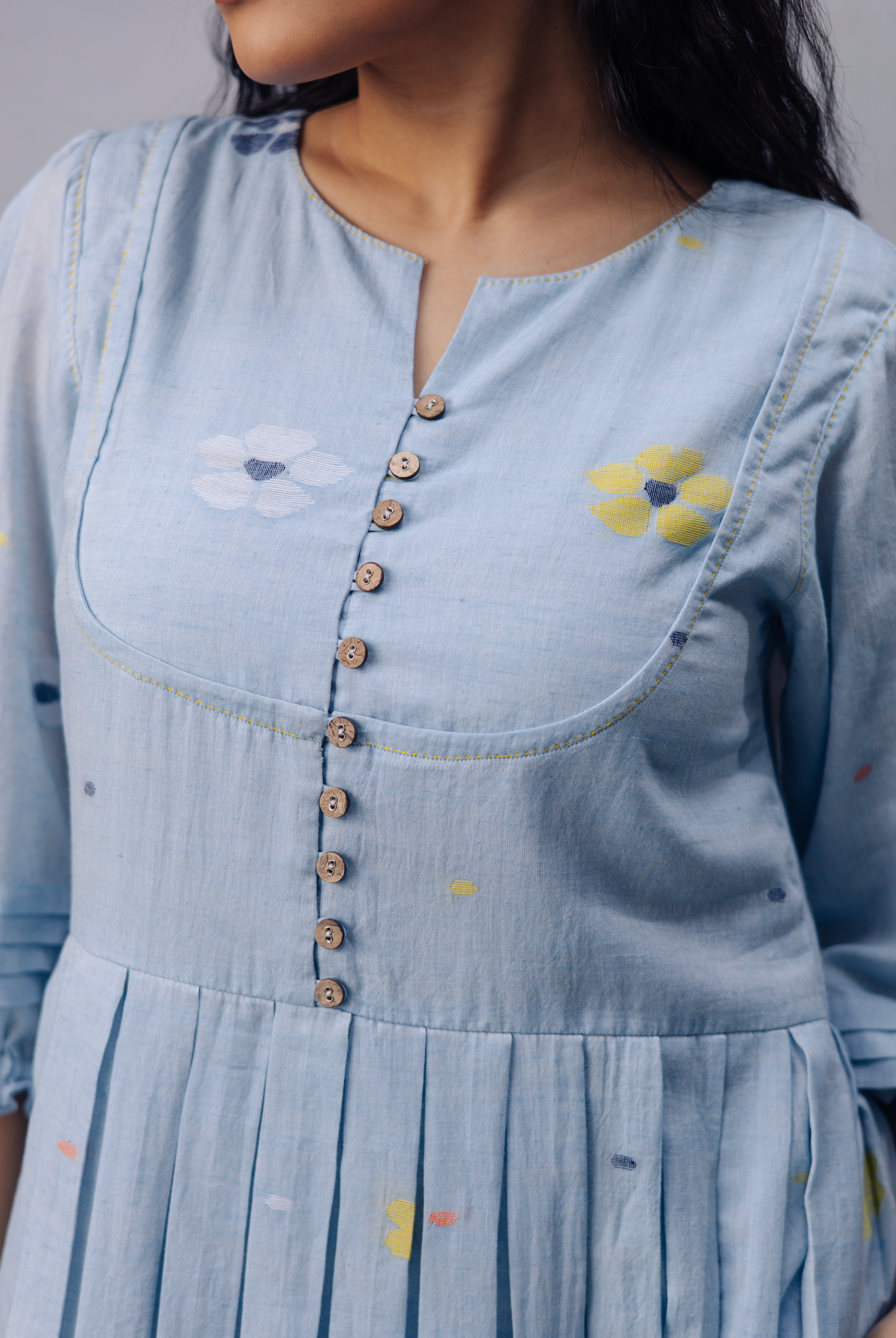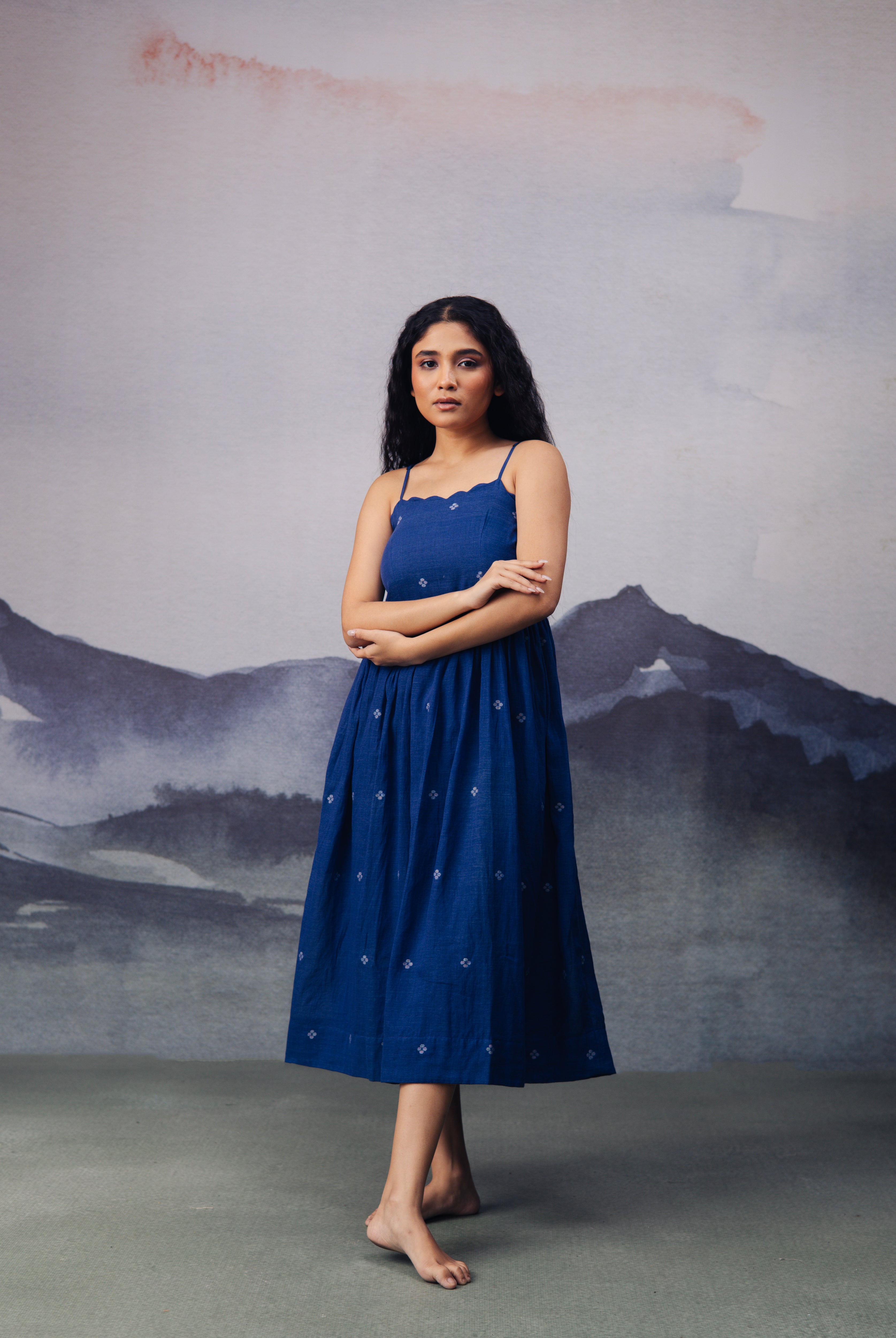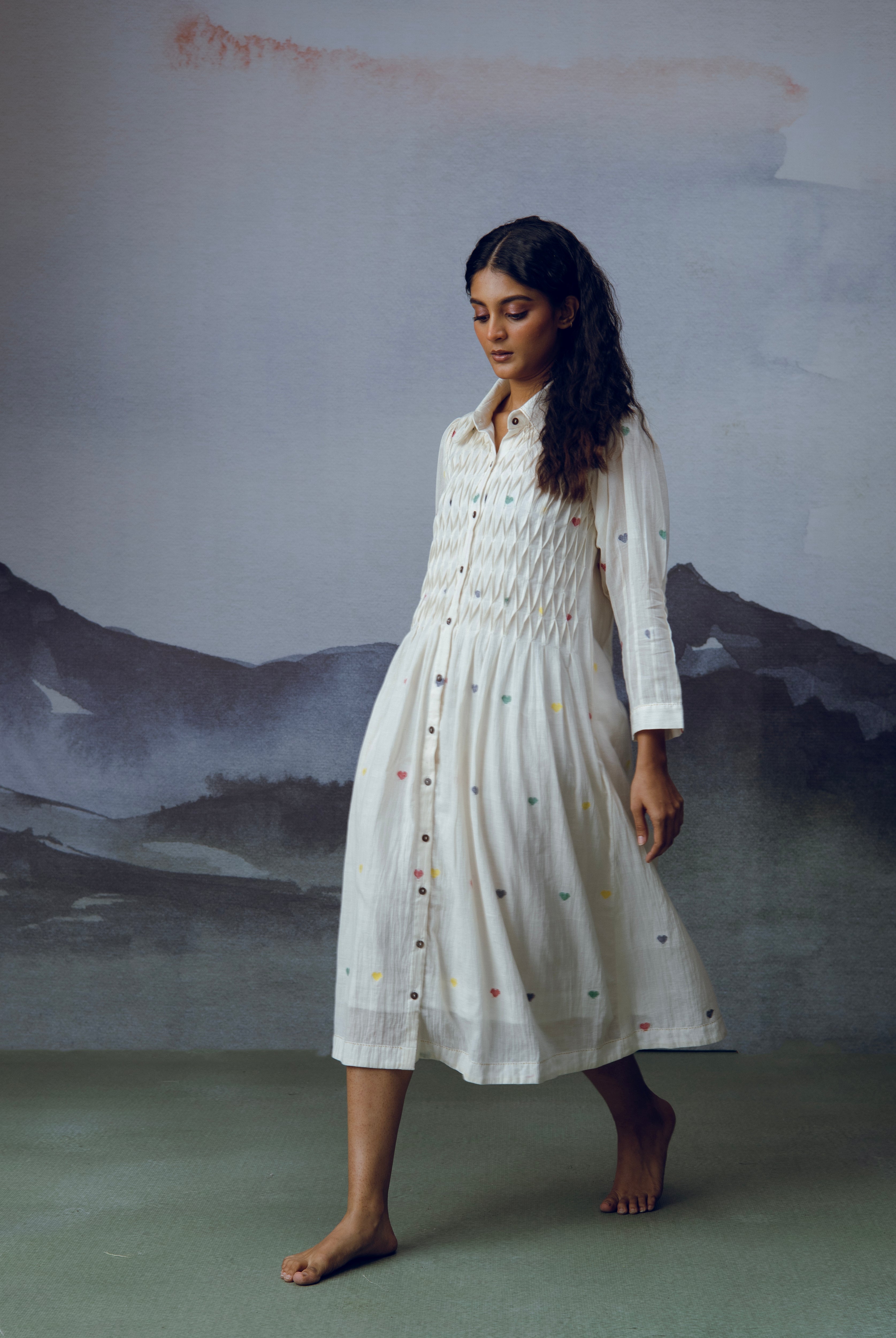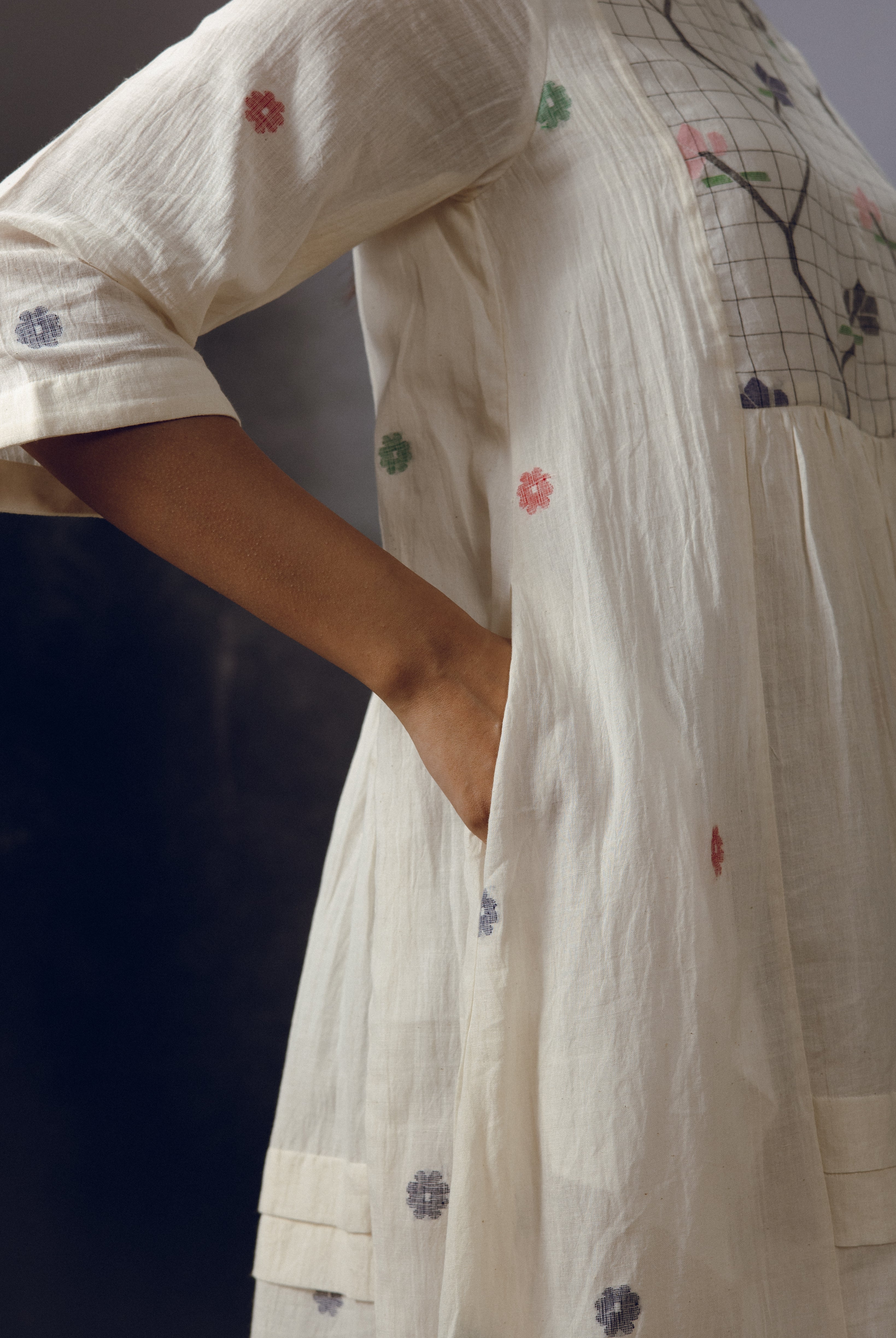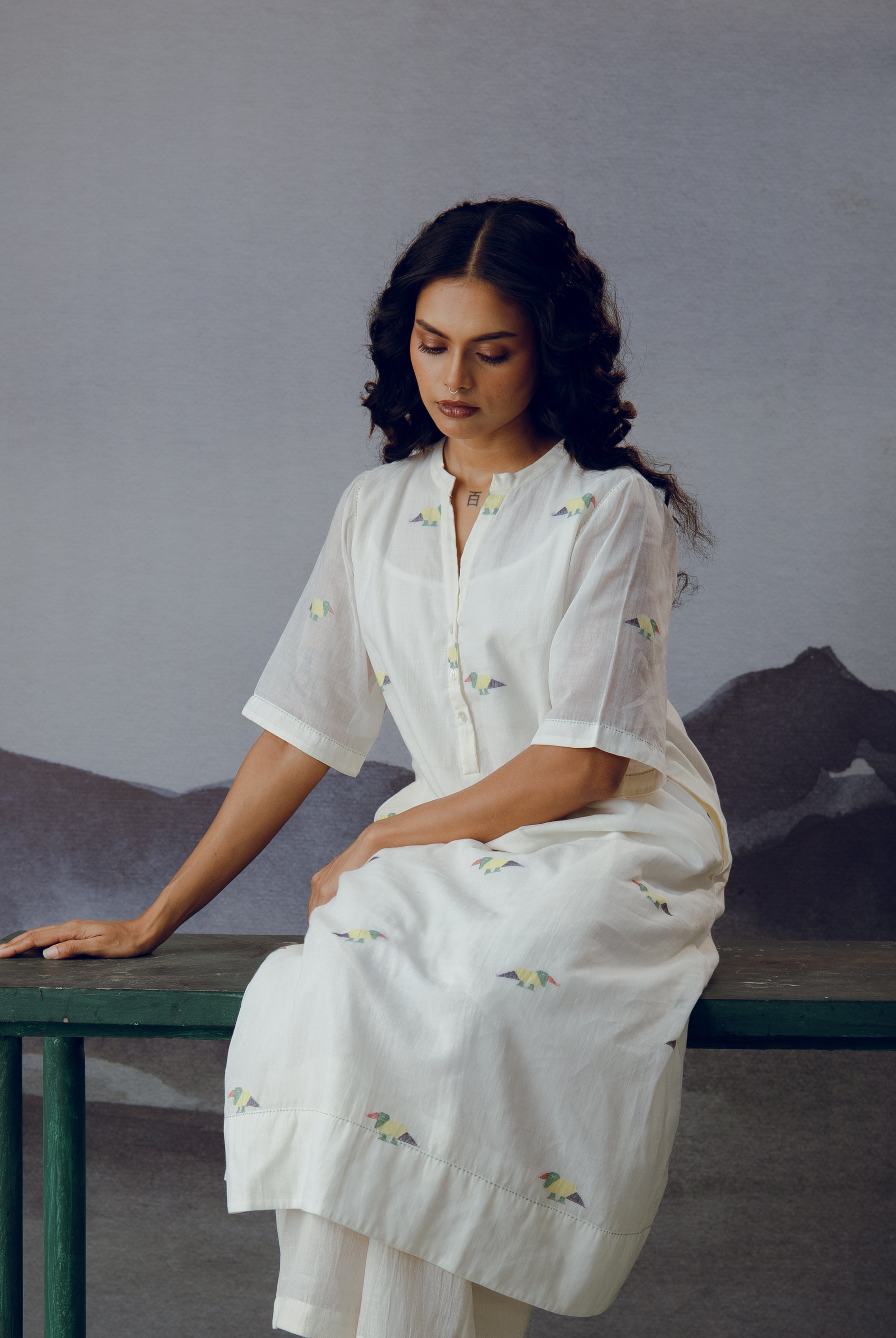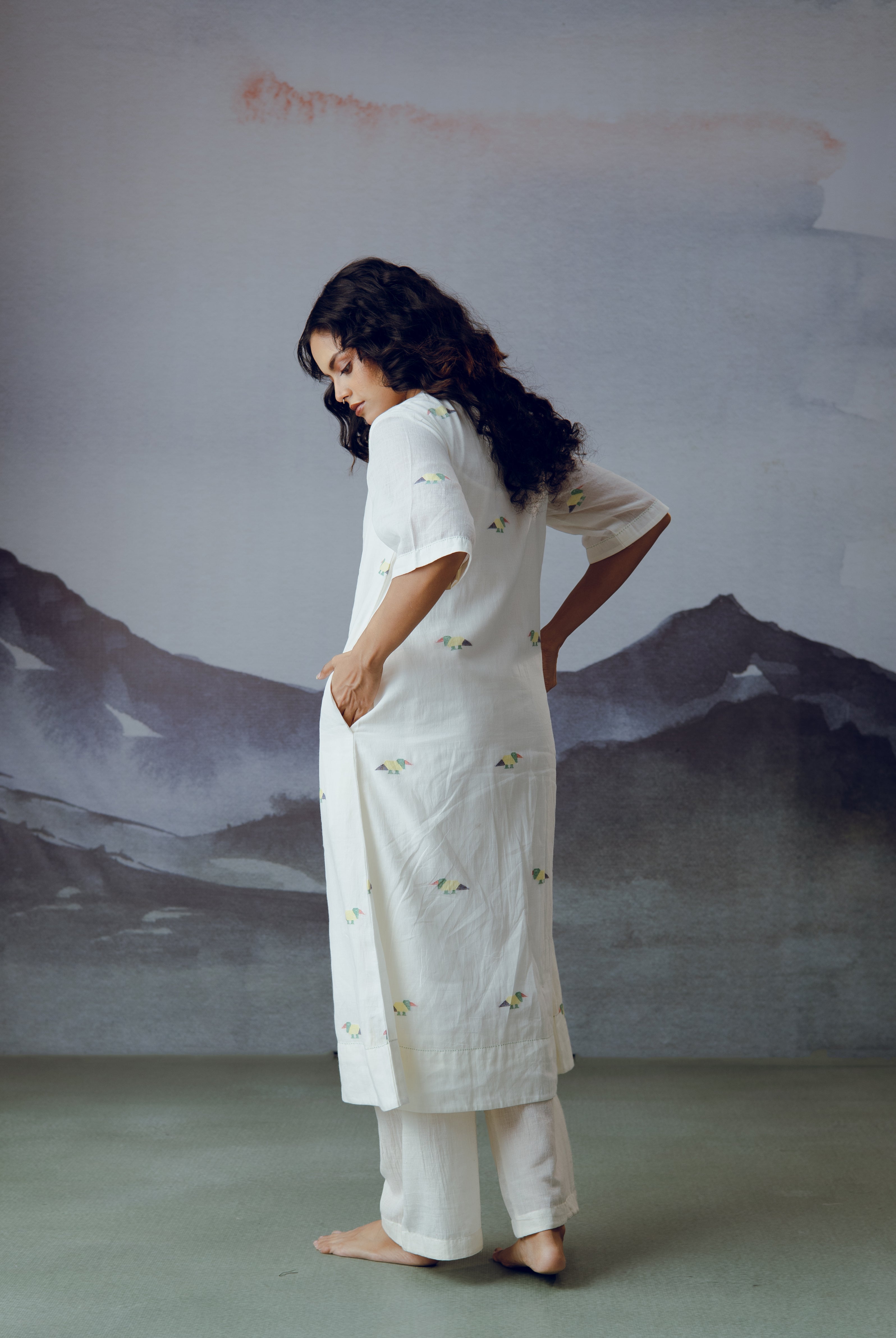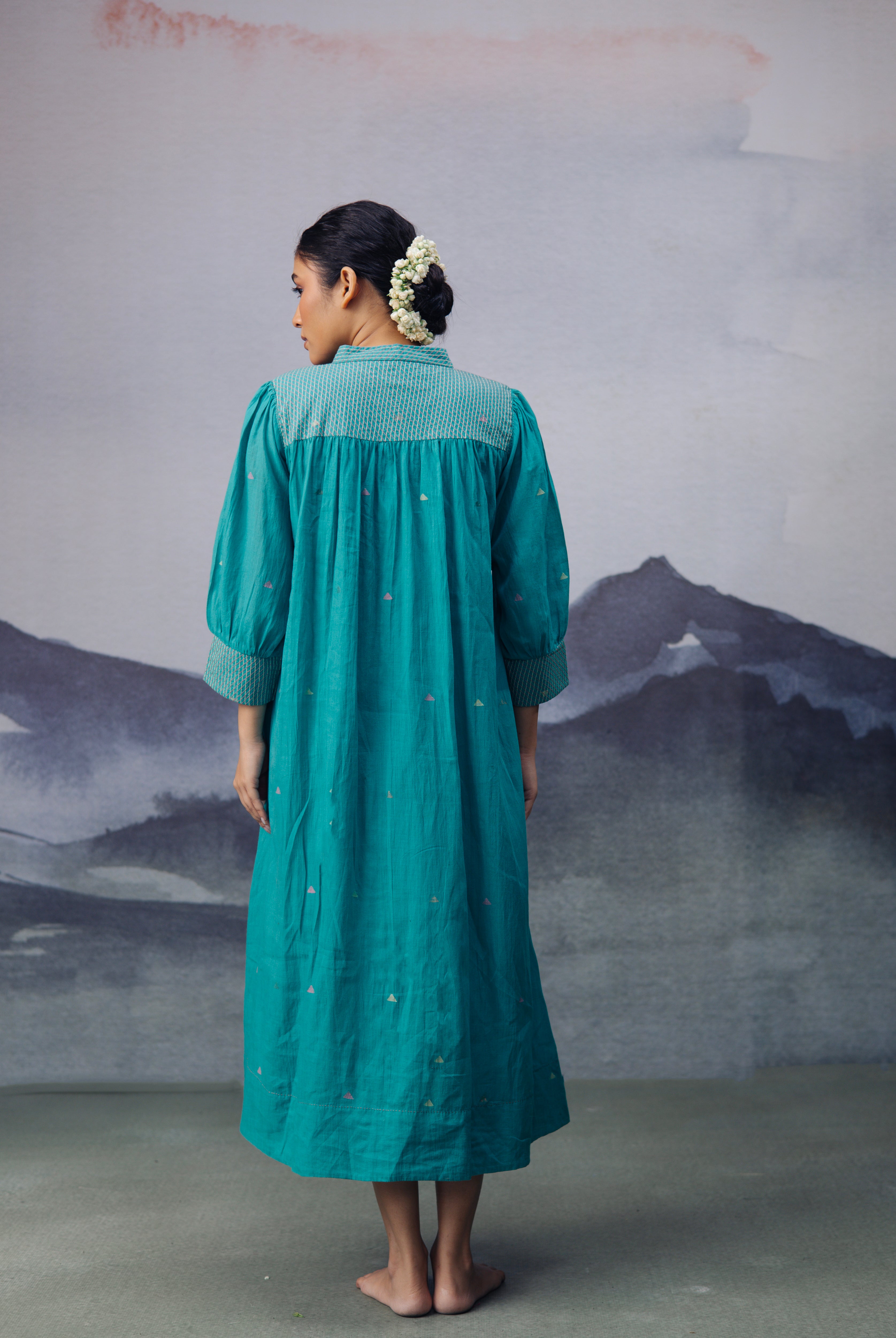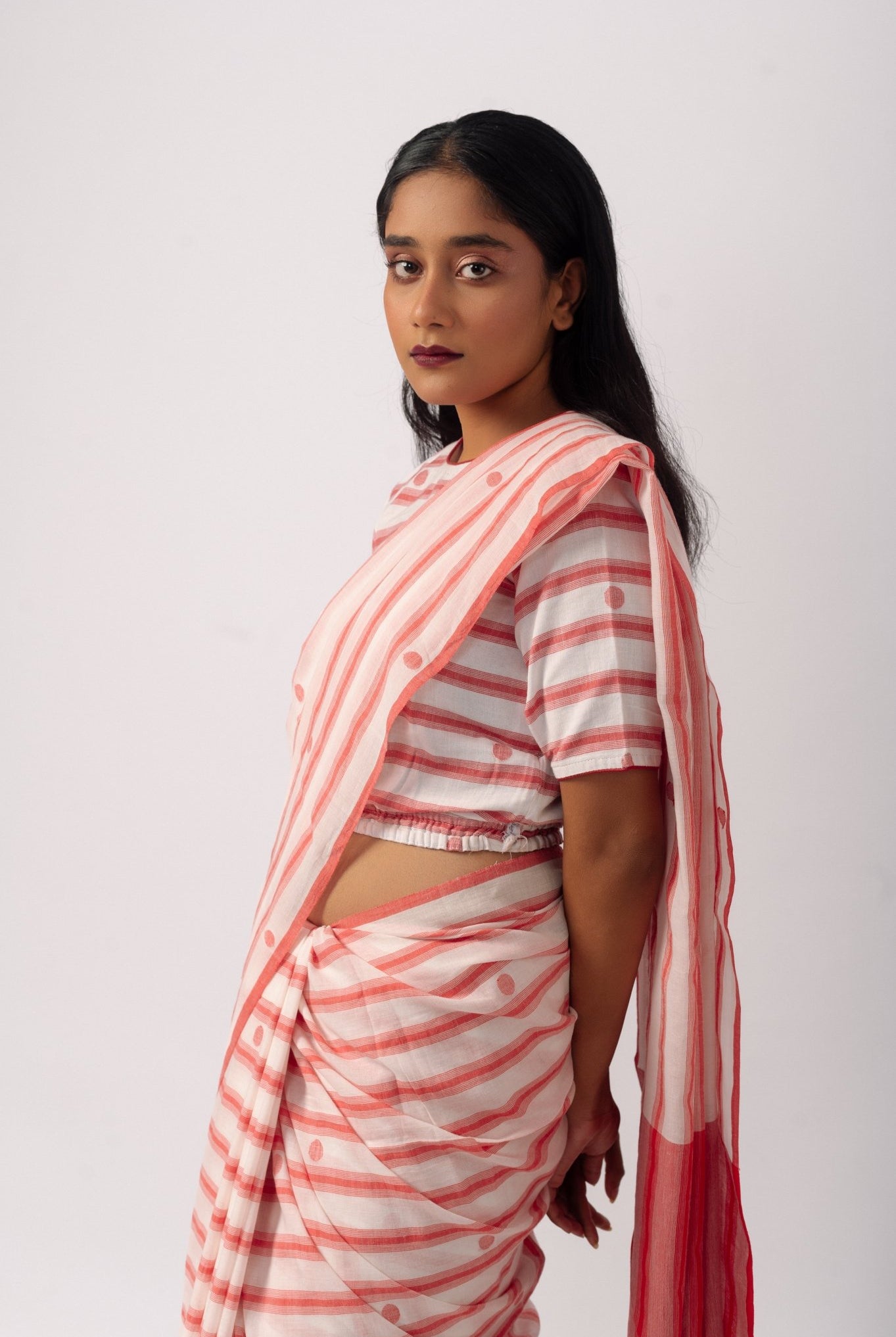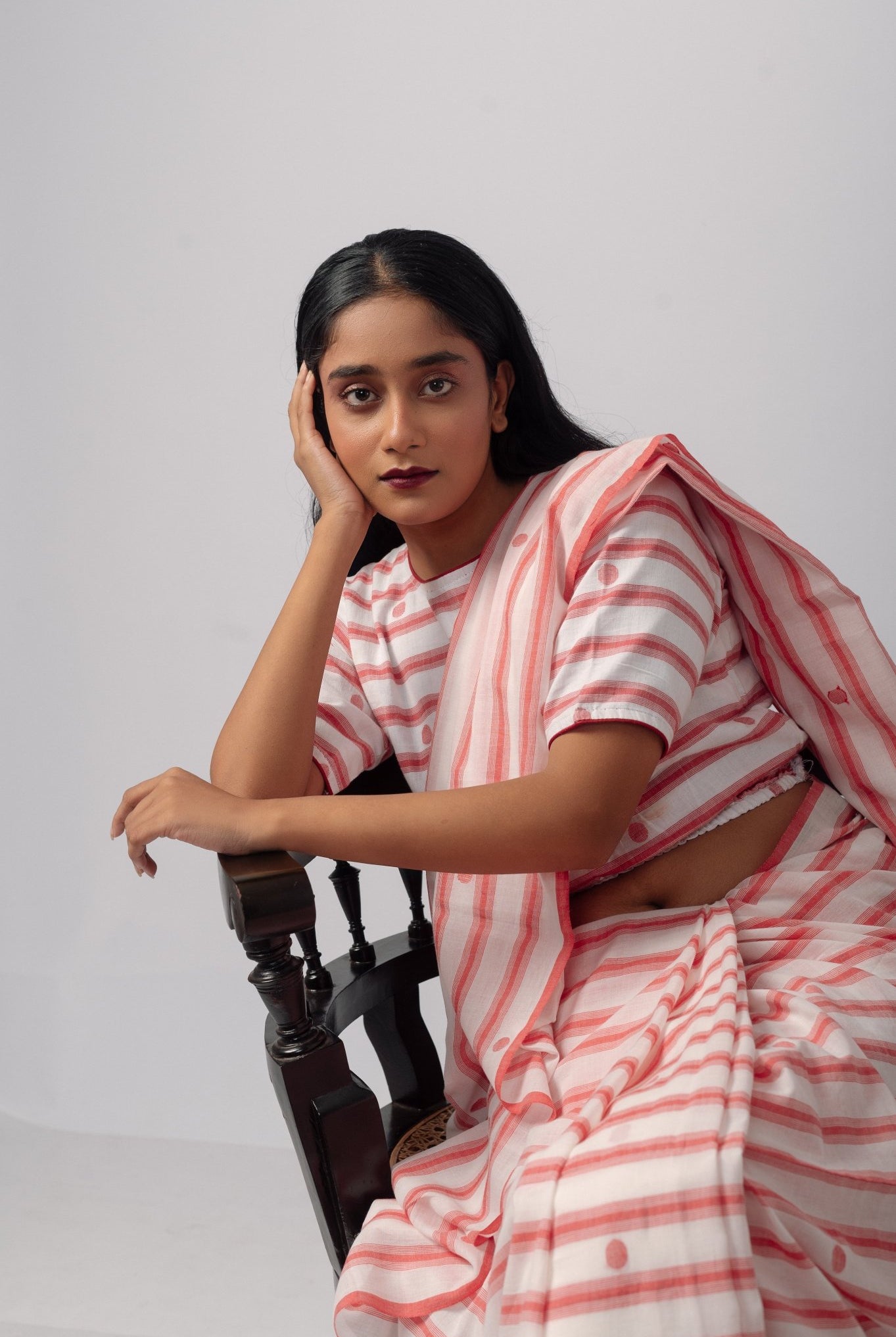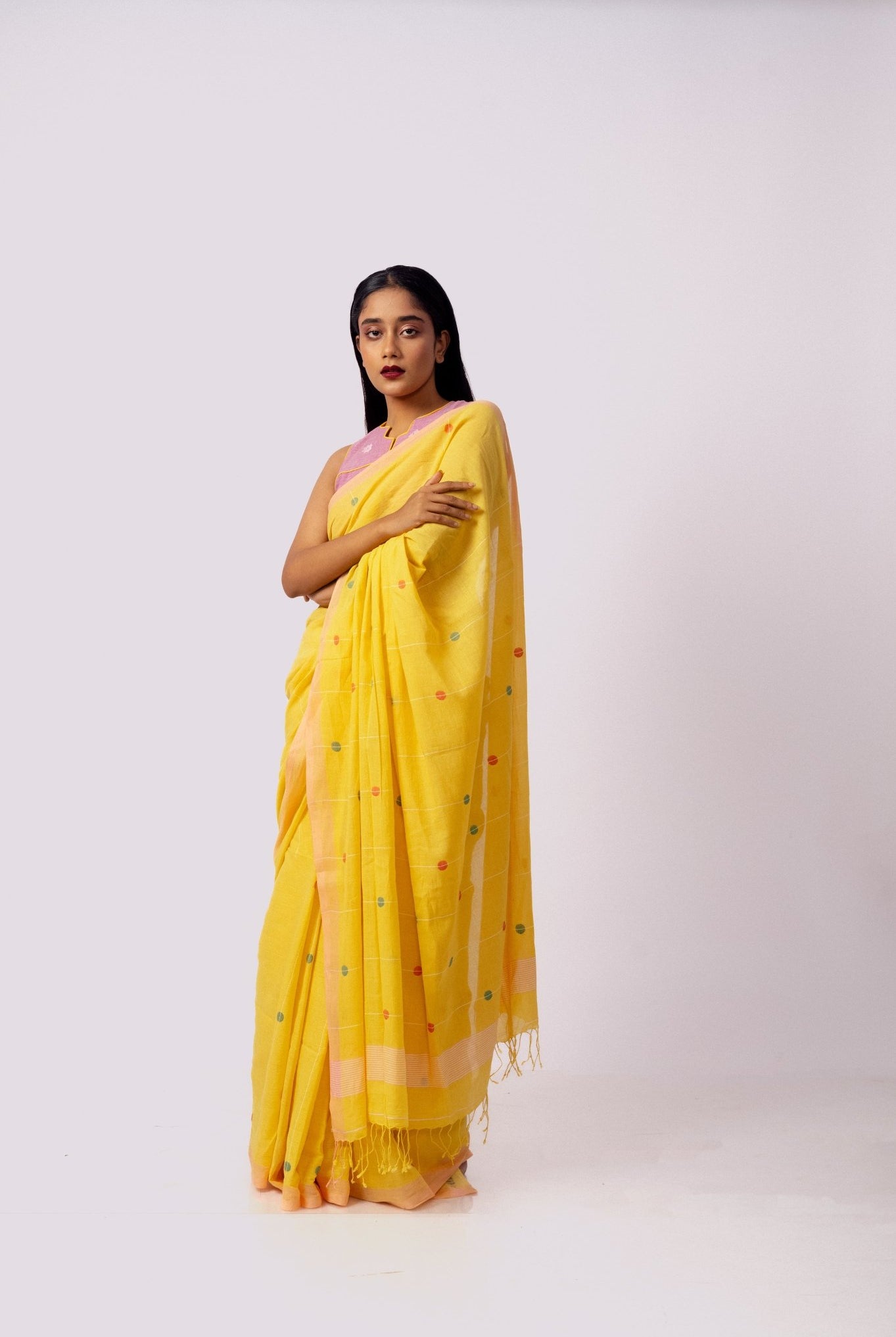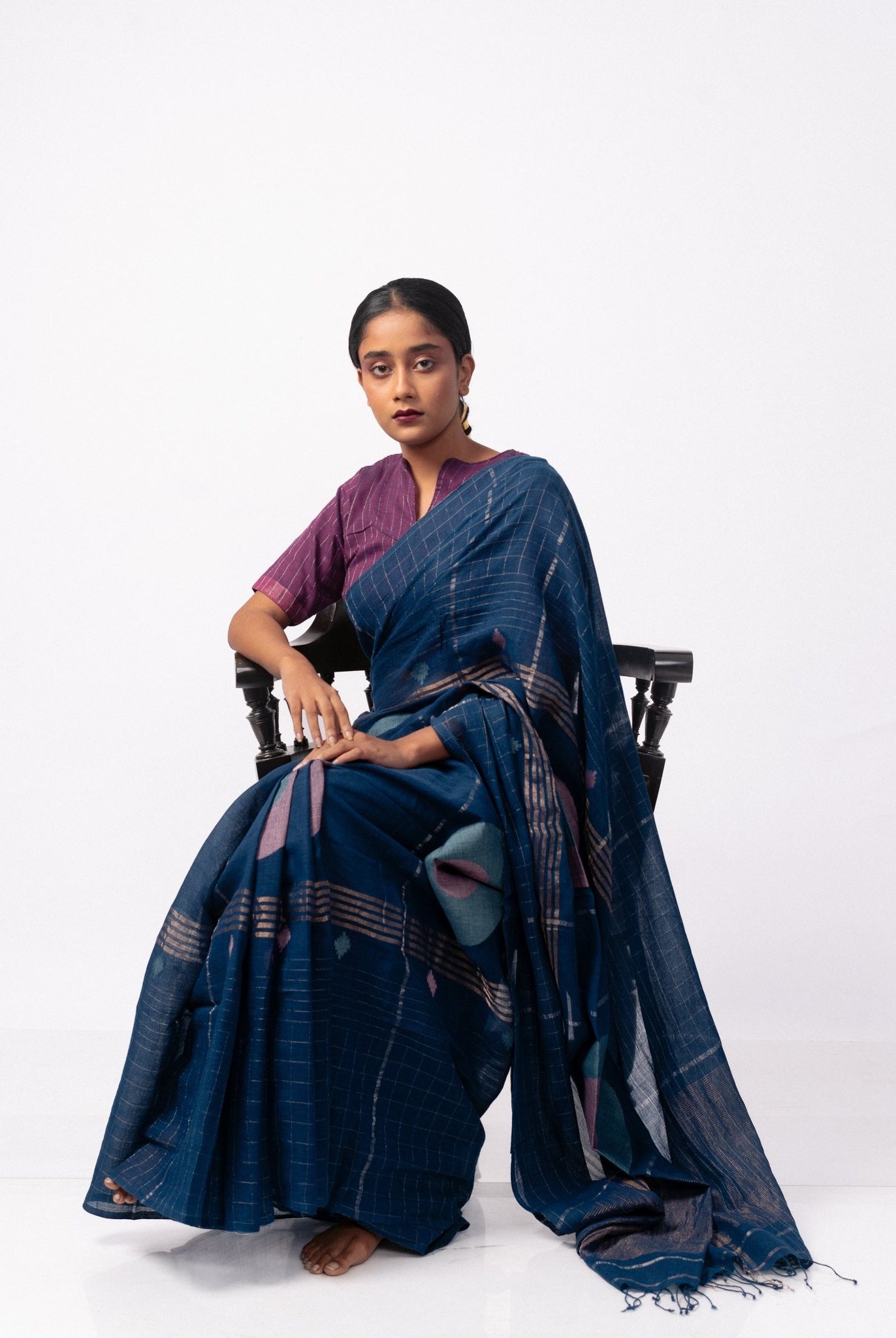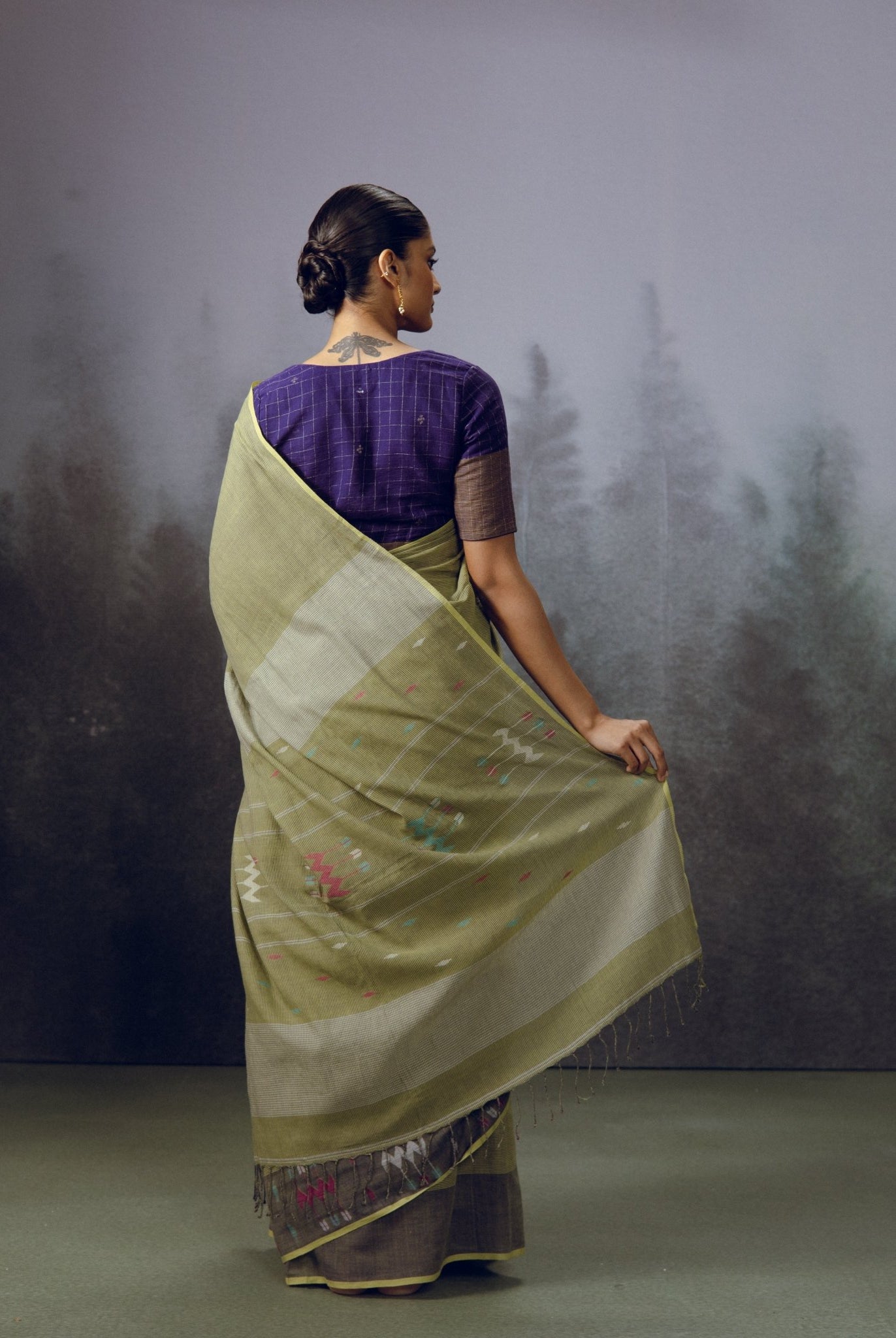Jamdani
If you ever want to feel the softest textile in hot weather of India, it undoubtedly has to be Jamdani. Did you know that Sulaiman, a 9th-century Arab traveller, wrote of cotton fabrics made in the kingdom of Rahmi (erstwhile undivided Bengal) which were so fine they could pass through a signet ring?
Around the 12th century, Islamic influences infused the fabric with countless motifs and colours. And through the magic of one inlaid thread, it turned into a surface for intricate patterns. The technique created motif-rich fabrics that bore poetic names like Shabnam (morning dew), Ab-i-rawan (flowing water) and Baftnama (woven wind). It was during the Mughal emperor Akbar's reign that the art blossomed into its most exquisite form, the flowered muslin, Jamdani.
The Jamdani motifs were traditionally inspired by nature, flora or fauna. As the weavers count threads instead of using machinery, the motifs were more geometric in nature than those of other traditional weaves.
Ciceroni's Jamdani curation pays homage to this softest woven textile with its collection of jamdani dresses, jamdani kurta sets, jamdani coords, jamdani shirts and more.

































